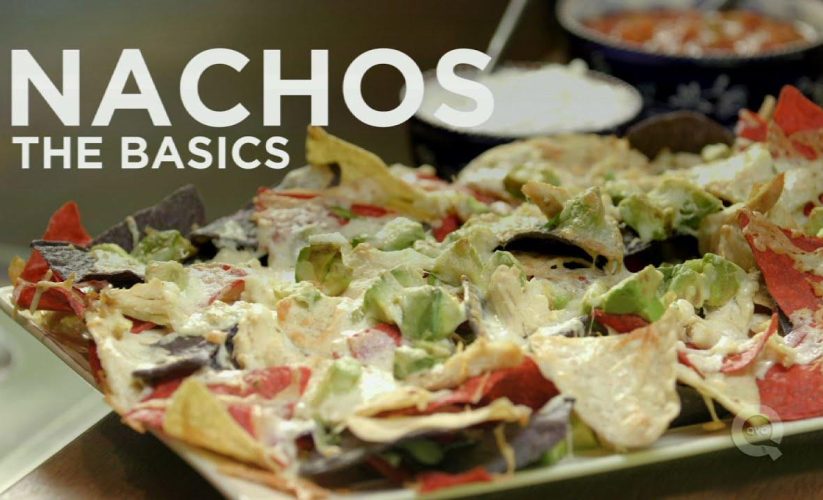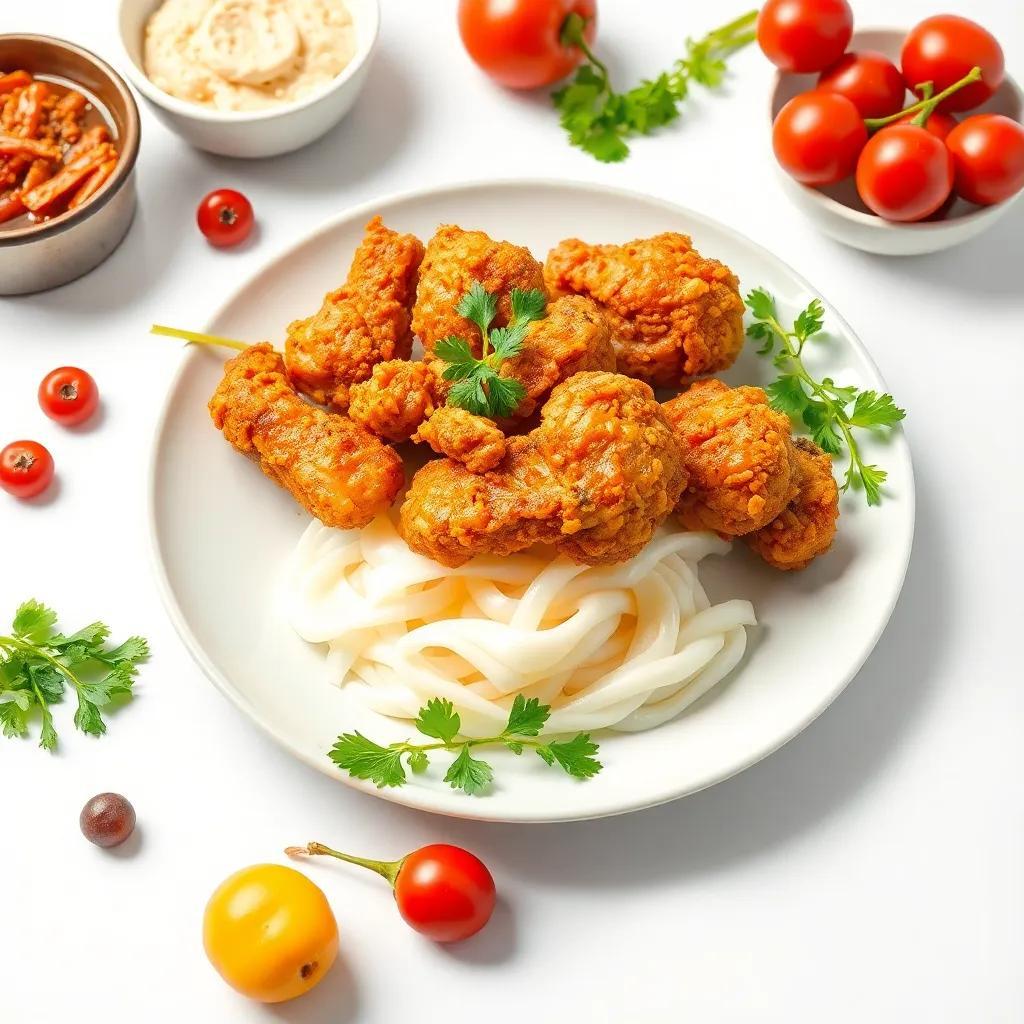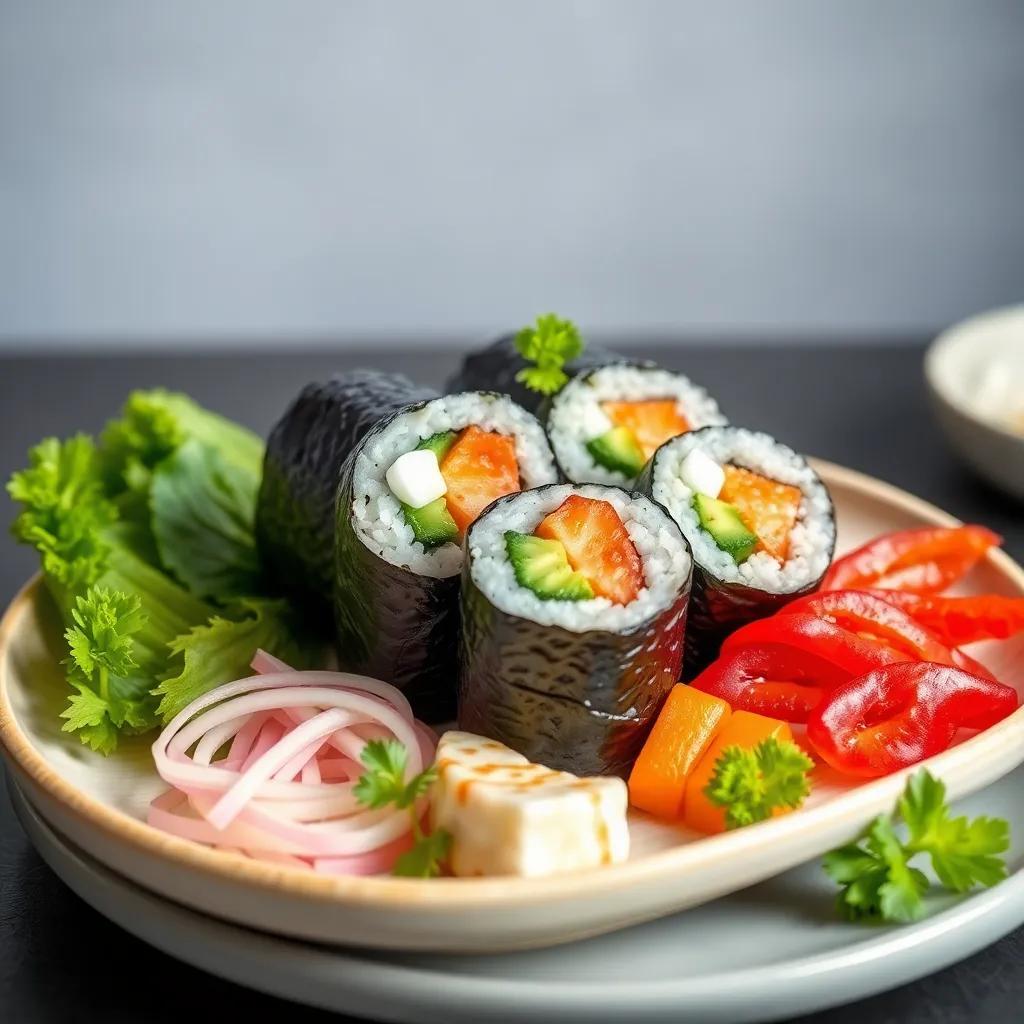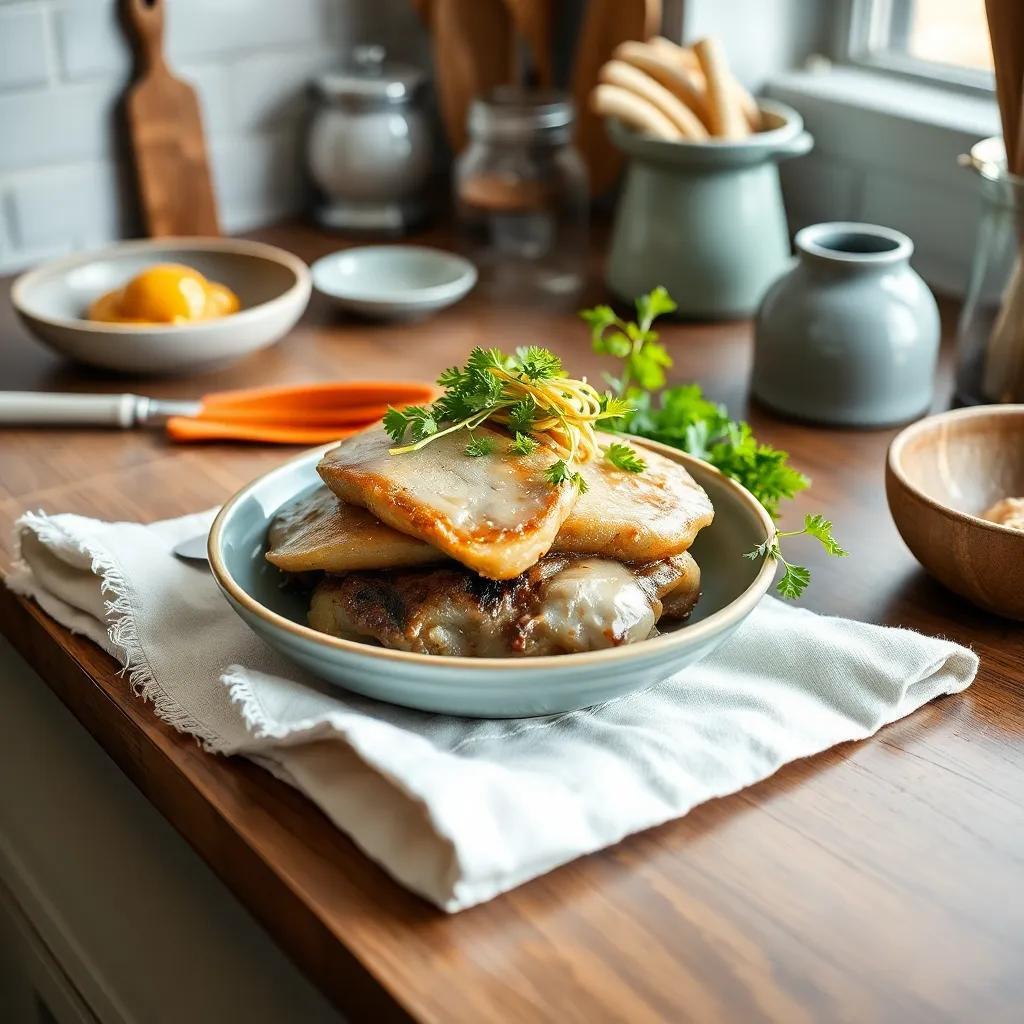Unlock Authentic Bulgogi Flavor: Easy Korean BBQ Recipe Guide
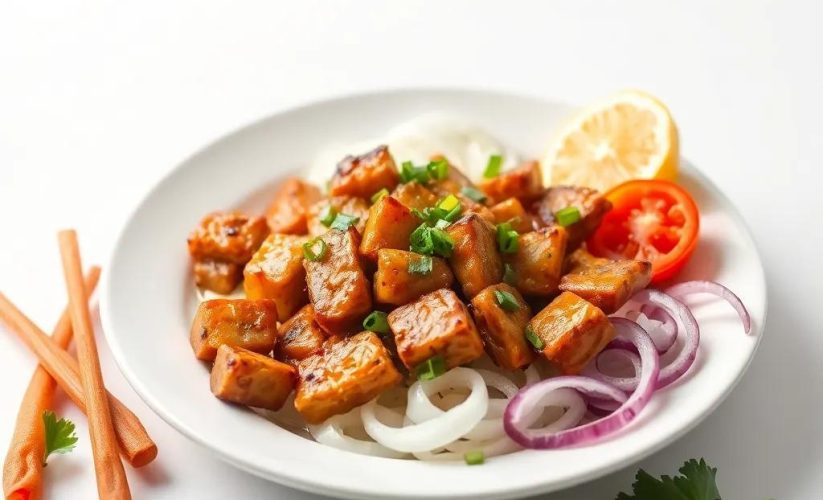
Unlock Authentic Bulgogi Flavor: Easy Korean BBQ Recipe Guide
🌍 Cuisine: Korean
⚙️ Difficulty: Easy
Ingredients
Nutrition Facts
350
Instructions
- Prepare the marinade by combining soy sauce, sugar, sesame oil, minced garlic, chopped onion, green onions, grated ginger, gochujang (if using), black pepper, toasted sesame seeds, and grated pear or apple in a large bowl.
- Mix well until the sugar dissolves and all ingredients are well incorporated.
- Add the thinly sliced beef to the marinade and toss well to evenly coat all slices with the mixture.
- Cover and refrigerate the beef for at least 30 minutes, preferably 2-4 hours for deeper flavor and tenderness.
- If desired, add julienned carrot just before cooking for extra texture and sweetness.
- Heat a grill pan or skillet over medium-high heat. Lightly oil the surface if needed.
- Cook the marinated beef slices in batches, spreading them out in a single layer, for about 2-3 minutes per side or until nicely browned and cooked through.
- Avoid overcrowding the pan to ensure proper searing and caramelization.
- Remove cooked bulgogi and keep warm while cooking remaining beef.
- Serve hot with steamed rice and optional lettuce or perilla leaves for wrapping.
- Garnish with extra toasted sesame seeds and sliced green onions if desired.
- Enjoy your authentic Korean BBQ experience at home!
Serving Suggestions
- Serve with steamed white or brown rice for a classic meal.
- Make ssam wraps using lettuce or perilla leaves to wrap bulgogi with rice and ssamjang (spicy dipping sauce).
- Accompany with Korean side dishes like kimchi, pickled radish, or bean sprouts.
- Top bulgogi with a fried egg for extra richness and texture.
- Include grilled mushrooms or onions as side vegetables to complement the beef.
- Use bulgogi as a filling for tacos or lettuce wraps with a twist.
- Pair with a refreshing cucumber salad or cold noodles for contrast.
Table of Contents

Intro
Step into the vibrant world of Korean cuisine with this easy-to-follow bulgogi recipe that brings authentic flavors right into your kitchen. Bulgogi, often celebrated for its irresistibly sweet-savory marinade and tender, juicy beef, is a crowd-pleaser whether for a casual weeknight dinner or a lively weekend gathering. What makes this recipe truly exciting is how quickly it comes together without sacrificing depth of flavor, letting you experience the essence of Korean BBQ with simple ingredients and straightforward steps.
Perfect for sharing around the table, this dish transforms any meal into a festive occasion, especially when paired with steamed rice and fresh leafy wraps. Its balance of smoky, caramelized meat and delicate hints of sweetness makes it equally suited for a family dinner, a dinner party, or an adventurous solo feast. Whether you’re a seasoned home cook eager to explore Korean cooking or a curious beginner looking for a satisfying duction, this bulgogi recipe invites you to savor the magic of Korean BBQ without the need for elaborate equipment or hard-to-find ingredients.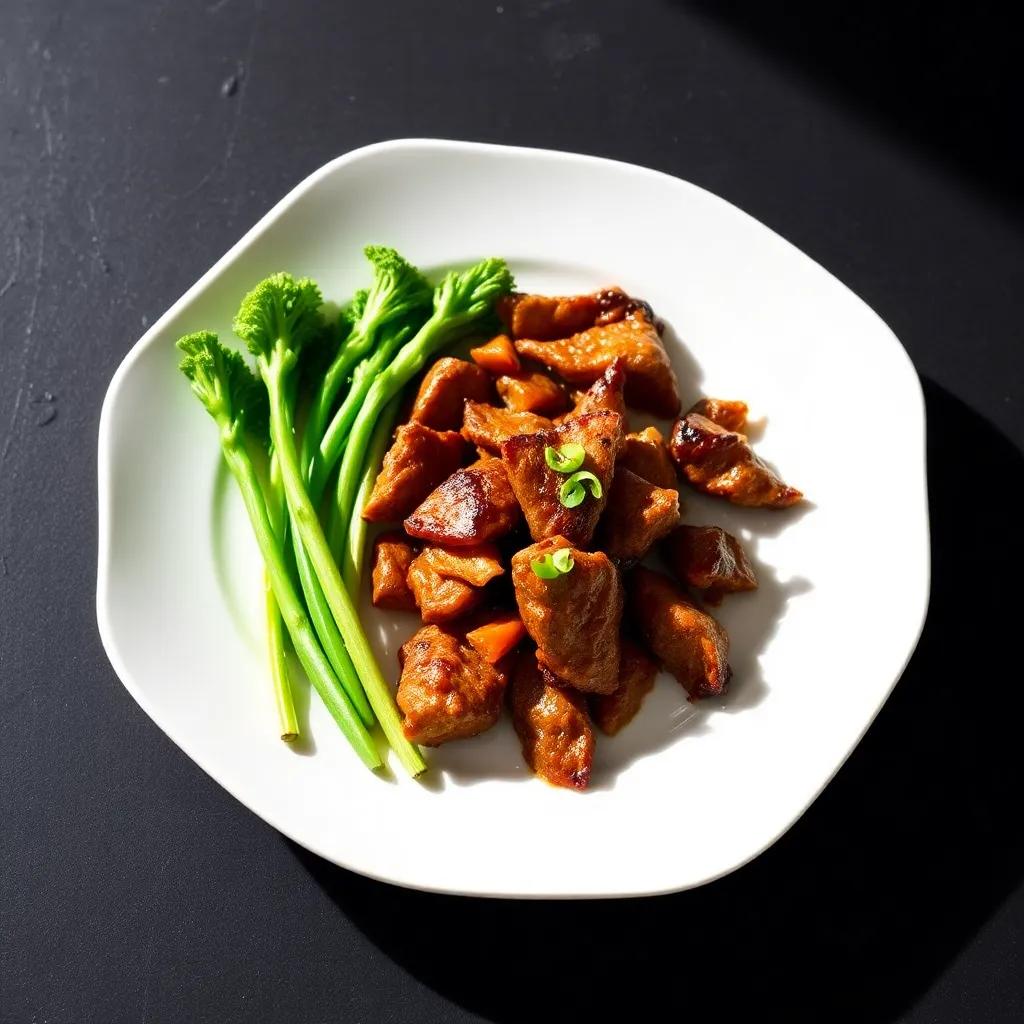
Ingredient Notes
When aiming for authentic bulgogi flavor, a few standout ingredients do the heavy lifting in both taste and texture, making them essential to the character of this Korean BBQ classic.
Korean Pear (or Apple) — The Secret Tenderizer
Grated Korean pear (or, if unavailable, a crisp apple) isn’t just about adding subtle sweetness—it plays a crucial role as a natural meat tenderizer. Its enzymes gently break down the beef’s fibers, yielding that melt-in-your-mouth tenderness bulgogi is famous for. When shopping, look for fresh, firm pears specifically labeled for cooking or “Asian pears,” which tend to be juicier and crispier than regular varieties. If neither is accessible, a small amount of pineapple or kiwi puree can be a bold substitute, but use sparingly to avoid overpowering the marinade with acidity or mushiness.
Soy Sauce — The Umami Backbone
Soy sauce provides the savory depth and salty balance that complements the marinade’s sweet and aromatic notes. For the best results, opt for a naturally brewed soy sauce rather than the mass-produced chemical-laden versions, as it offers a richer, more complex flavor. Those mindful of sodium intake can try low-sodium soy sauce alternatives or tamari for a gluten-free option, though be prepared for subtle differences in taste.
Sesame Oil — The Nutty Aromatic Enhancer
Just a touch of toasted sesame oil infuses the bulgogi with a toasted, nutty aroma that instantly evokes Korean BBQ’s signature scent. Because its flavor is potent, use it sparingly to avoid overwhelming the delicate balance of the marinade. When purchasing, choose cold-pressed or unrefined toasted sesame oil for authentic aroma and avoid generic vegetable oils labeled “sesame flavored,” which lack depth.
Gochujang (Optional) — Mild Heat and Depth
While not in every traditional bulgogi recipe, gochujang adds a subtle layer of mild heat and fermented complexity that elevates the marinade into something more dynamic and slightly smoky. This Korean chili paste can be found in most well-stocked grocery stores or Asian markets. If you prefer less heat or don’t have gochujang on hand, a small spoonful of mild chili powder or a dash of smoked paprika can provide a gentle warmth without introducing too much spice.
By paying attention to these key ingredients—whether sourcing them at an Asian market, ordering online, or finding clever substitutes—you’ll unlock the authentic taste and texture that make bulgogi so beloved worldwide. Each element, from the sweet tenderizer to the aromatic oils, works in harmony to create that perfect balance of flavors that’s both approachable and deeply satisfying.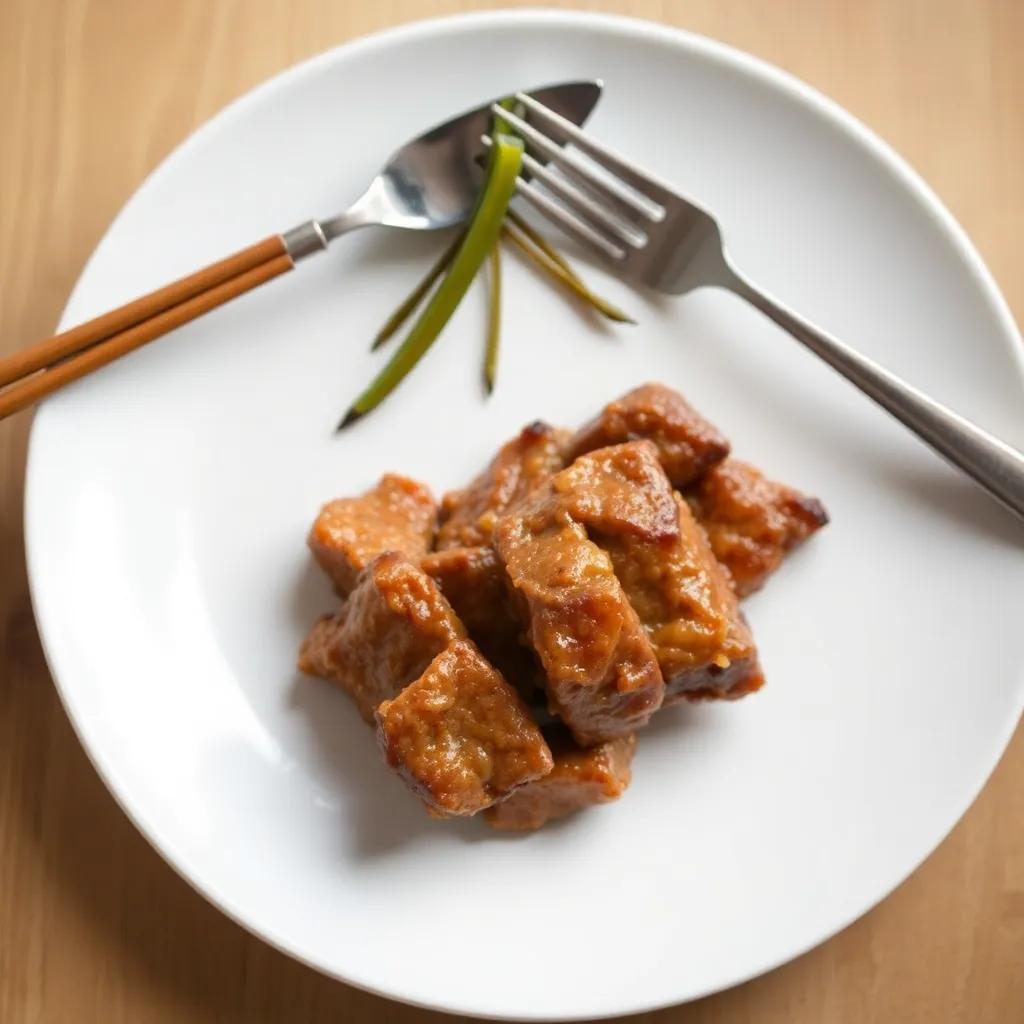
Tips & Variations
Mastering Bulgogi at home is all about attention to detail and a willingness to experiment. Here are some tips and variations to help you tailor this Korean BBQ classic to your palate and dietary needs:
- Marinate Longer for Maximum Flavor and Tenderness
While 30 minutes is sufficient if you’re short on time, marinating the beef for 2 to 4 hours—or even overnight—allows the flavors to deeply penetrate the meat and results in a more tender, juicy bite. Just be sure to keep it refrigerated throughout.
- Choose the Right Cut and Thickness
Thinly sliced ribeye or sirloin offers the perfect balance of tenderness and marbling. If you can’t find pre-sliced beef, try freezing a block of meat for 30–60 minutes to make slicing easier. Thicker slices require longer cooking times and may not caramelize as nicely.
- Customize the Sweetener
Sugar is traditional, but feel free to swap in honey, brown sugar, or even maple syrup for a different nuance of sweetness. Each imparts a unique flavor note—from the molasses depth of brown sugar to the floral hints of honey.
- Adjust Heat and Spice Levels
Gochujang adds mild heat and fermented tang, but it’s optional. For those who prefer no spice, omit it entirely without losing bulgogi’s signature taste. Alternatively, kick up the heat with a dash of Korean chili flakes (gochugaru) or a drizzle of spicy chili oil for a bolder profile.
- Add or Swap Vegetables to Your Liking
Julienne carrot adds crunch and color, but you can also include thin slices of mushroom (shiitake or cremini), bell pepper, or even zucchini. These absorb the marinade beautifully and add nutritional variety.
- Make It Gluten-Free
Traditional soy sauce contains wheat, but tamari or coconut aminos make excellent gluten-free substitutes. Just be mindful tamari can be slightly less salty, so adjust seasoning accordingly.
- Take a Vegan or Vegetarian Approach
While bulgogi is centered on beef, the marinade itself works beautifully with plant-based proteins. Try marinating thinly sliced king oyster mushrooms, tempeh, or firm tofu for a delicious vegan version that still captures the essence of Korean BBQ.
- Incorporate Fresh Herbs and Aromatics
Adding a splash of toasted sesame seeds at the end is classic, but don’t hesitate to toss in fresh cilantro or Thai basil for an herbal twist. Thinly sliced chili peppers or a squeeze of fresh lime juice can brighten the dish as well.
- Alternate Serving Styles
Beyond rice and lettuce wraps, consider folding bulgogi into steamed bao buns, topping it on crispy rice cakes (tteokbokki), or mixing it into fried rice or noodle bowls for a versatile meal experience.
By embracing these tips and variations, you can make bulgogi that fits perfectly into your lifestyle, kitchen pantry, and taste preferences—whether you’re aiming for classic comfort, a health-conscious option, or a creative fusion with other cuisines.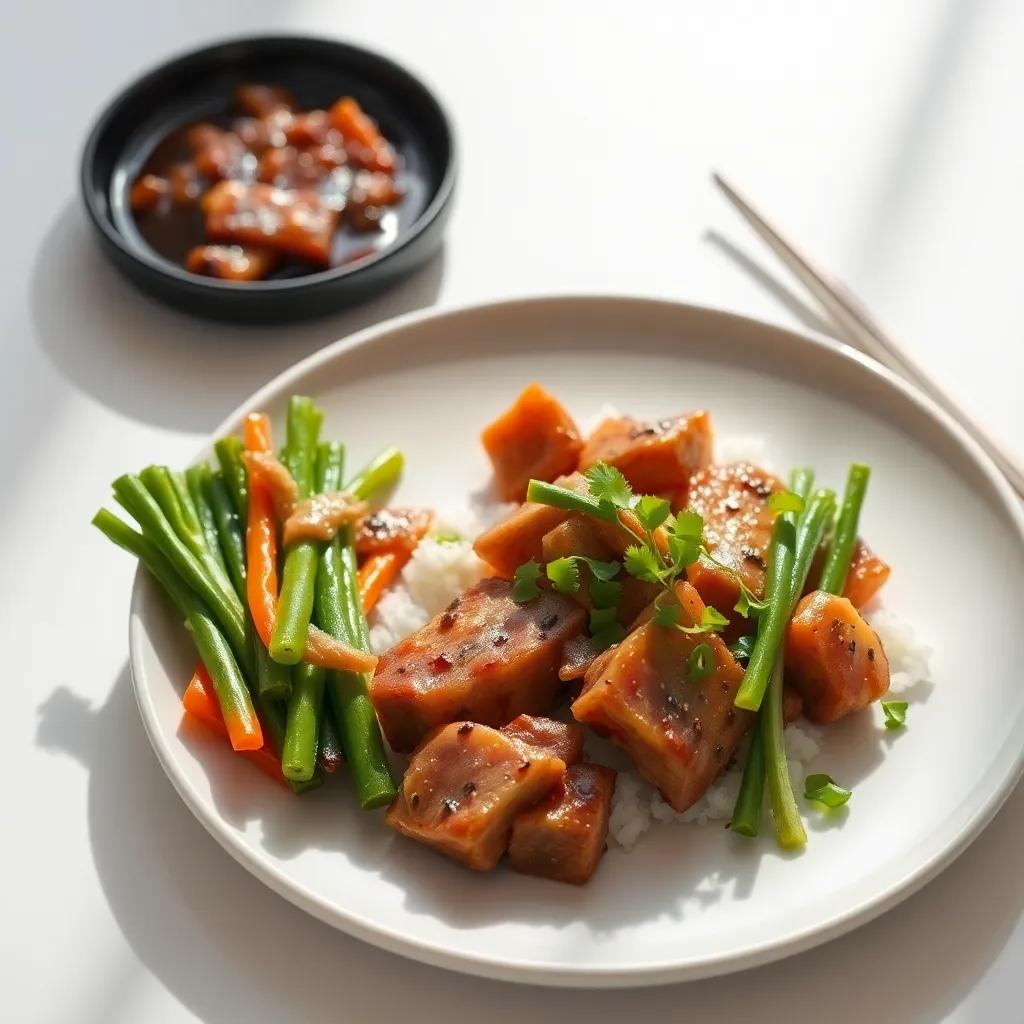
Leftovers & Storage
Leftover bulgogi is a delightful treat that keeps well when properly stored, meaning you can enjoy this savory Korean BBQ flavor beyond the initial meal. To maintain the juicy tenderness and rich marinade notes, it’s best to cool the cooked bulgogi to room temperature before transferring it into airtight containers. Glass containers with tight-fitting lids or BPA-free plastic containers are ideal for preserving freshness and preventing any lingering odors in your fridge.
In the refrigerator, stored bulgogi will stay flavorful and safe to eat for up to 3 to 4 days. For best results, keep it separated from any leafy wraps or fresh sides, which are better prepared fresh or stored separately to avoid sogginess. When reheating, gently warm the bulgogi in a skillet over medium heat or microwave it with a damp paper towel covering the container to prevent drying out. Adding a splash of water or a few drops of sesame oil when reheating can revive its tender texture and maintain that signature glossy finish.
If you want to extend the shelf life further, bulgogi freezes well and can be portioned into freezer-safe containers or heavy-duty zip-top bags. Press out excess air to minimize freezer burn, and label each container with the date. Frozen bulgogi can be kept for up to 2 months without significant loss of flavor or texture. When ready to enjoy, thaw overnight in the refrigerator before reheating gently on the stovetop.
This recipe also lends itself beautifully to meal prep. Prepare a batch on the weekend and portion into containers with steamed rice and fresh lettuce or perilla leaves on the side. This makes for quick, flavorful lunches or weeknight dinners that capture the essence of Korean BBQ without the lengthy prep. For on-the-go meals, pack your bulgogi separately from any fresh veggies or sauces to keep components crisp and vibrant.
By taking these simple storage steps, you can savor your homemade bulgogi just as freshly as the first bite, seamlessly integrating Korean BBQ magic into your weekly meal rotation with ease and convenience.
Behind the Recipe
Bulgogi isn’t just a dish—it’s a beloved culinary tradition deeply woven into Korean culture, where food often sparks connection and celebration. The word “bulgogi” literally means “fire meat,” referring to the original method of grilling thinly sliced, marinated beef over an open flame. Historically, bulgogi was enjoyed by Korean royalty and became a symbol of festive gatherings, embodying warmth, togetherness, and the joy of sharing vibrant flavors.
This recipe draws on that rich heritage, bringing the spirit of Korean barbecue home in a way that’s accessible yet true to its roots. The balance of sweet, savory, and aromatic notes highlights how Korean cooking masterfully blends simple ingredients to create complex, memorable tastes. Using naturally tender cuts and the subtle enzymatic magic of grated pear or apple echoes traditional techniques that have been perfected over centuries.
For many, bulgogi evokes nostalgic memories—family meals around a steaming grill, the lively clink of soju glasses, or street food adventures beneath glowing neon signs. Preparing this recipe might even spark a similar warmth in your kitchen, inviting friends and loved ones to gather round and savor not just the food, but the experience it represents.
In essence, this easy Korean BBQ guide offers more than just a method; it’s a bridge to a culture that values harmony, flavor, and conviviality—one juicy, caramelized bite at a time. Whether it’s a quiet weeknight or a festive celebration, bulgogi is a delicious reminder of how food can bring people together, transforming simple ingredients into a shared story.
FAQ
Can I use other proteins instead of beef for bulgogi?
What’s the best way to store leftover bulgogi?
Can I make bulgogi ahead of time and freeze it?
Is there a gluten-free version of bulgogi marinade?
What side dishes pair well with bulgogi?
Can I use a grill pan or skillet if I don’t have a grill?
How can I adjust bulgogi for less sweetness?
Try It Yourself
Bringing the rich, savory flavors of authentic Bulgogi into your kitchen is easier than you think—and endlessly rewarding. This simple Korean BBQ recipe not only invites you to savor every bite but also sparks a delicious adventure that you can customize and make your own. Whether you’re cooking for family, friends, or just yourself, it’s a tasty way to celebrate bold flavors and good company.
If you give this recipe a try, we’d love to hear how it turned out! Feel free to leave a comment, share your unique twists, or rate the dish so others can join in on the Bulgogi excitement. Happy grilling, and may your kitchen always smell like a Korean BBQ feast!


